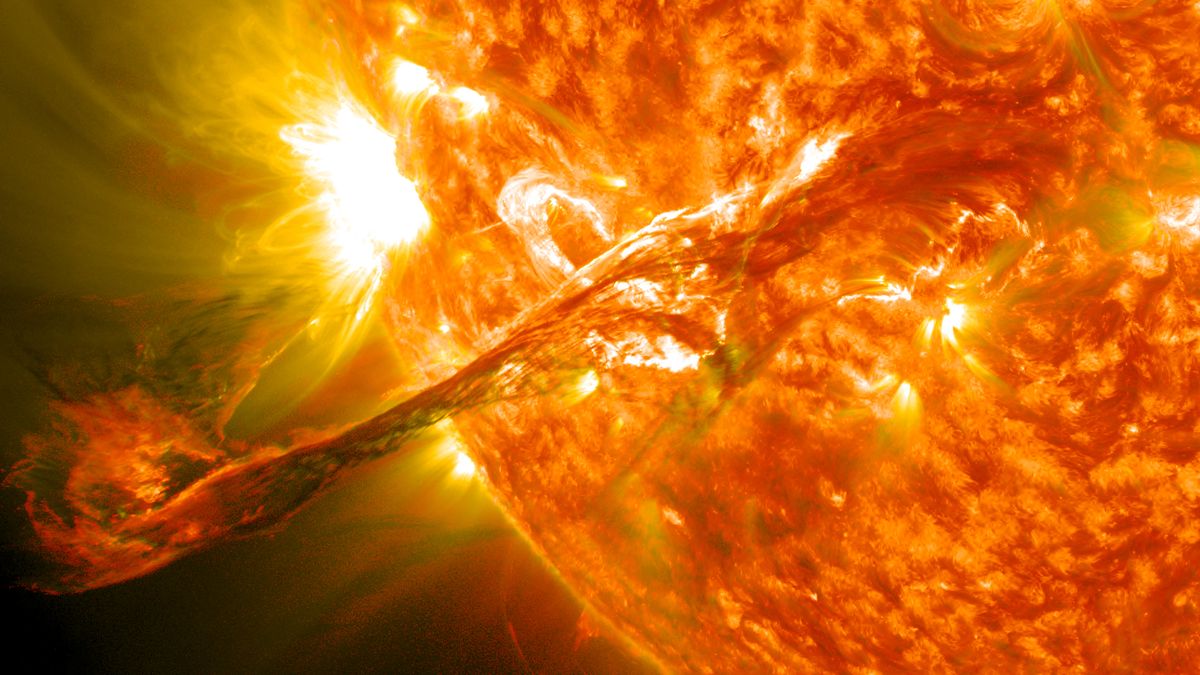Mars Radiation Monitoring by NASA Spacecraft
Two spacecraft operated by NASA are set to closely monitor the increasing levels of radiation bombarding Mars as the approaching solar maximum of this year looms closer. This initiative aims to enhance the readiness of astronauts for potential future missions to the Red Planet.
Solar Maximum and Its Implications
Every 11 years, the sun enters a heightened phase of activity referred to as solar maximum, due to the emergence of its robust and dynamic magnetic fields. This period of the solar cycle witnesses a spike in sunspot frequency and intensity on the solar surface, leading to the generation of solar flares and coronal mass ejections that release powerful streams of solar radiation into space.
Unlike Earth, which is shielded by its magnetic field from the impacts of such solar storms, Mars lacks this safeguard due to the loss of its global magnetic field in the distant past. Consequently, Mars, along with any spacecraft or potential crewed mission on the planet, is more susceptible to the effects of intense solar activity.
Mission Objective and Approach
NASA’s MAVEN (Mars Atmosphere and Volatile EvolutioN) orbiter and Curiosity rover have joined forces to analyze solar particles and radiation heading towards Mars, from high altitudes above the planet to its surface. This collaborative effort aims to understand the quantity and energy levels of solar particles reaching Mars.
The Curiosity rover’s Radiation Assessment Detector instrument, or RAD, plays a pivotal role in assessing the impact of the planet’s thin atmosphere on particle intensity reaching the Martian surface. Additionally, RAD observes how radiation interactions affect carbon-based molecules on the surface, providing valuable insights into the protection requirements for future Mars explorers.
Enhancing Solar Radiation Understanding
Through their combined efforts, MAVEN and Curiosity cooperate closely to detect any changes in RAD data when a solar flare is identified by the orbiter. This coordination allows for real-time monitoring of radiation levels, serving as an early warning system for other Martian spacecraft teams to safeguard vulnerable instruments.
Moreover, this year’s solar maximum coincides with the onset of the dustiest season on Mars, influenced by the planet’s warming atmosphere during perihelion. The potential occurrence of a global dust storm alongside a solar storm presents an opportunity to investigate the environmental factors contributing to Mars’ current arid conditions.
Scientists speculate that global dust storms may play a role in the redistribution of water vapor on Mars, potentially shedding light on the planet’s transition from a watery landscape to its current desolate state. This ongoing research seeks to unravel the mysteries of Mars’ past through the lens of its atmospheric dynamics and geological evolution.
Image/Photo credit: source url





